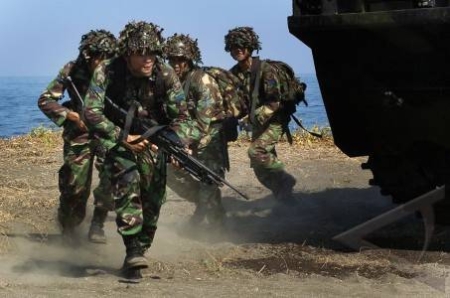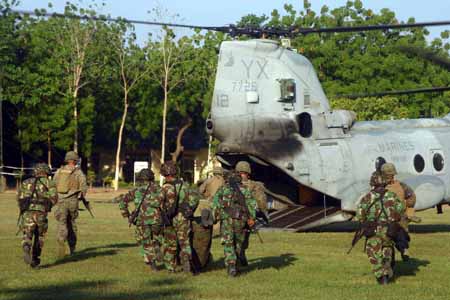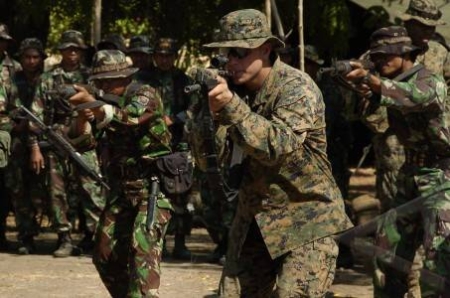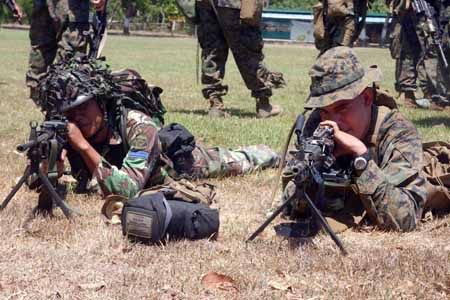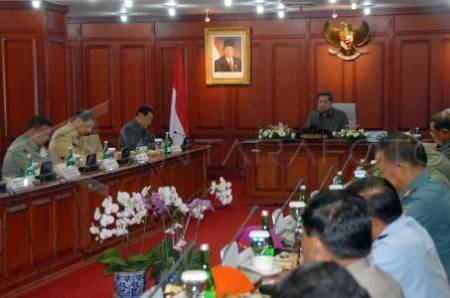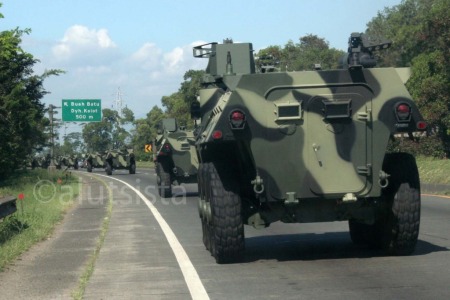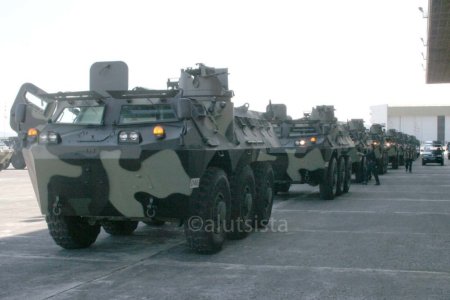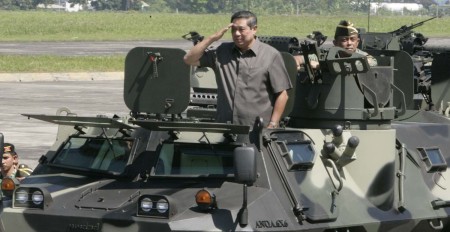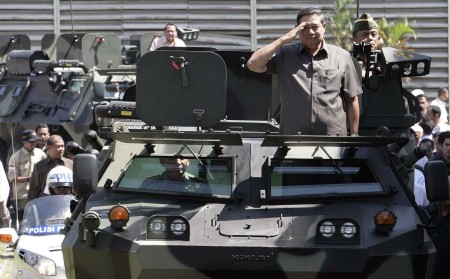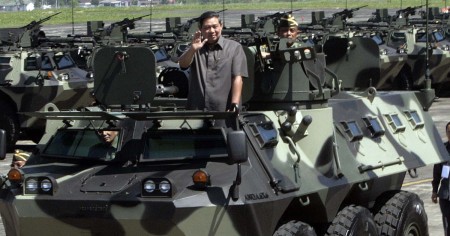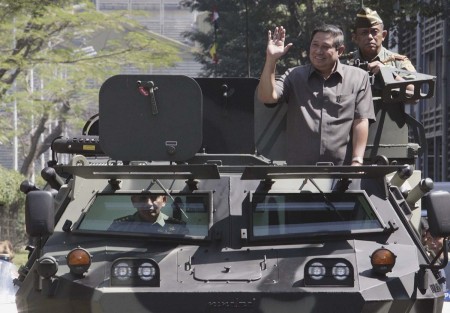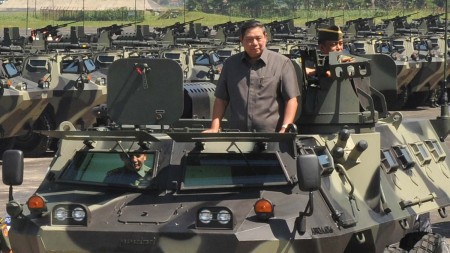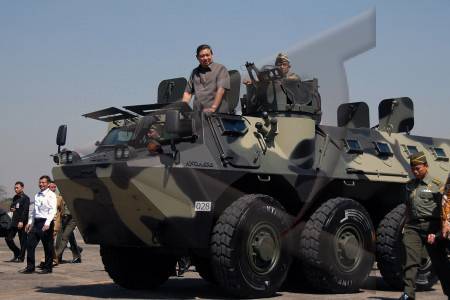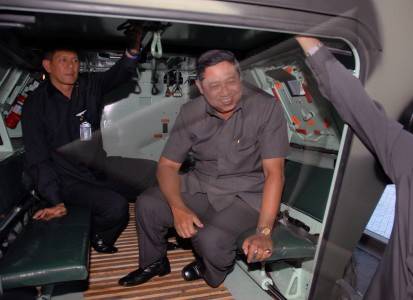Source: antara, wikipedia, antara, airforce-technology.com, etc.
A Brief Introduction of PT Dirgantara Indonesia
Indonesian Aerospace (IAe) (Indonesian: PT. Dirgantara Indonesia (DI)) is an Indonesian aerospace company in Asia with core competence in aircraft design, development and manufacturing of civilian and military regional commuter aircraft. The company was formerly known as Industri Pesawat Terbang Nusantara (IPTN) or Industri Pesawat Terbang Nurtanio (IPTN).
Established in 1976 as a state owned company, it has developed its capability as aircraft manufacturer and diversified its product not only in the field of aircraft but also other area such as Telecommunication, Automotive, Maritime, Information Technology, Oil & Gas, Control & Automation, Military, Simulation Technology, Industrial Turbine, and Engineering Services.
DI until now has produced aircraft such as CN-235-220 as many as 250 units, NC 212-200 102 units, Super Puma helicopter NAS 332 19 units, NBELL 412 helicopter 31 units and NBO 105 helicopter as many as 122 units.
Meanwhile, current activities are manufacturing one CN-235 MPA for South Korea (delivery in 2010), one NC 212-400 EADS-CASA licensed that ordered by PT Airfast (2010), one N19 prototype that designed by DI (2013) and one amphibious aircraft under Donier Seawings’s license (2013).
Product
1. Fixed wing aircraft
Some Fixed-wing aircraft Aircraft made by IAe:
* CN-235 Civil, Military, and Maritime Version (Joint Development with CASA).
* NC 212, a licensed production of CASA C.212 Aviocar aircraft.
* N 250 A prototype commercial turboprop aircraft, discontinued due to Asian financial crisis, the first prototype flew 55 minutes on August 10, 1995.
* N 2130 Planned commercial jet aircraft, discontinued due to Asian financial crisis before making prototype.
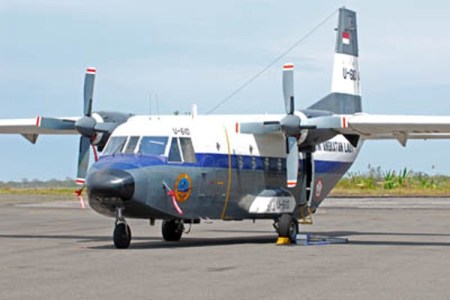

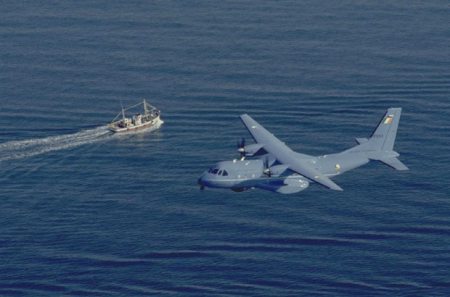
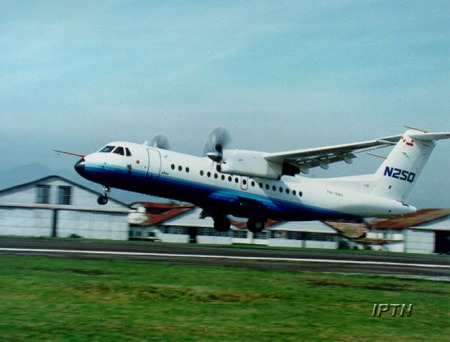
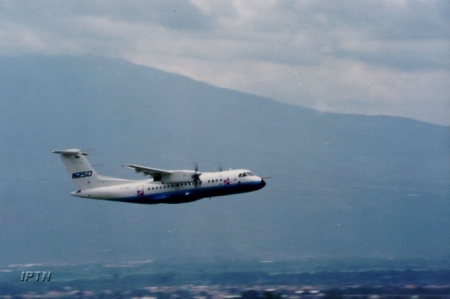
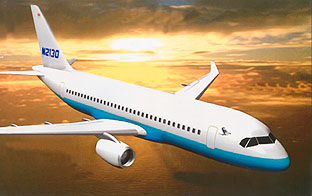
2. Rotary wing aircraft
Some Helicopter Aircraft made by IAe:
* NAS 330J, a licensed production of Aérospatiale Puma helicopter.
* NAS 332, a licensed production of Eurocopter Super Puma helicopter.
* NBell 412,a licensed production of Bell 412 helicopter.
* NBO 105,a licensed production of Bölkow BO 105 helicopter.
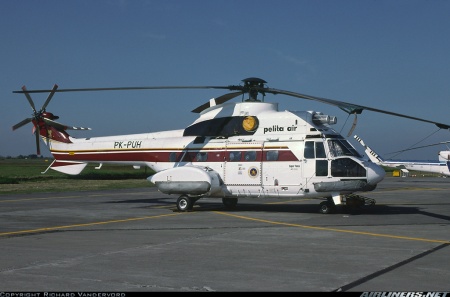
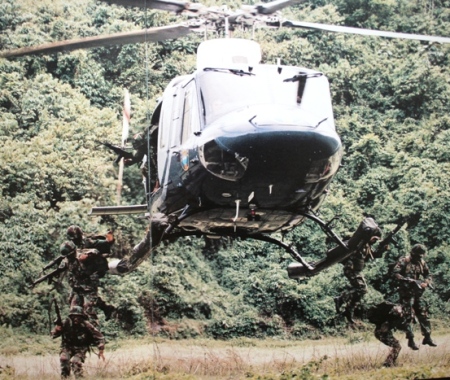
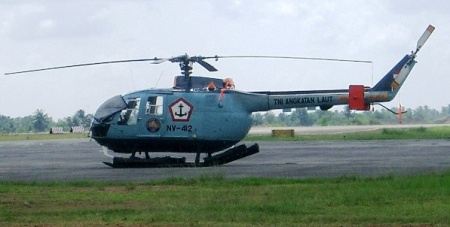
3. Aircraft component
Some subcontracts had been received by IAe:
* Component of Airbus A330.
* Component of Airbus A340.
* Wing Component of Airbus A380.
* Component of Boeing 737.
* Component of Boeing 757.
* Component of Boeing 767.
* Component of F-16 Fighting Falcon.
* Component of Fokker F100.
4. Armaments
* FFAR 2.75 inch rocket under Belgium’s license.
* SUT-Torpedo, under Germany’s license.
* NDL-40 Ground-to-Ground Rocket Multi Launcher.
CN-235
The CASA/IPTN CN-235 is a medium-range twin-turbo-prop aircraft developed jointly between CASA in Spain and IPTN in Indonesia (now PT Dirgantara Indonesia) as a regional airliner and military transport. Amongst its military roles are maritime patrol, surveillance and troop transport. The largest user is Turkey which has a total of 61 aircraft (with most production were done in their home company). The project was a joint venture between CASA and Indonesian manufacturer IPTN, which formed Airtech company to manage the program. Responsibility for design and production was shared at 50% between the two companies. The partnership applied only to the Series 10 and Series 100/110, with later versions being developed independently.
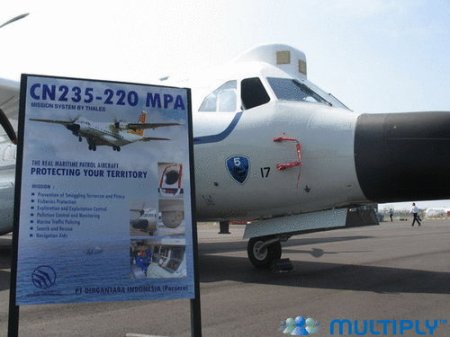
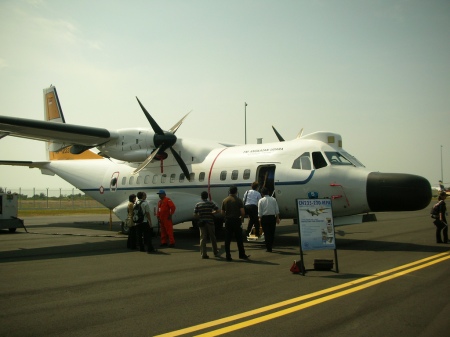
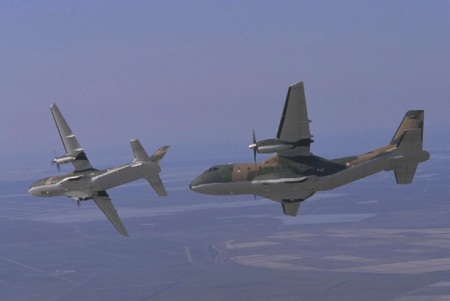
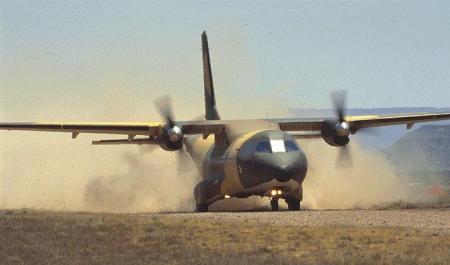
Design began in January 1980 with first flight on 11 November 1983. Spanish and Indonesian certification was on 20 June 1986; the first flight of the production aircraft was on 19 August 1986 and FAA type approval was granted on 3 December 1986. The aircraft entered service on 1 March 1988. Over 230 of all versions of CN-235 are in service and have accumulated more than 500,000 flight hours. It is the best aircraft in the world in its class.
One of the variant of CN-235 is for maritime surveillance purposes. The CN-235 maritime patrol aircraft has been developed in two versions with different avionics systems: the CN-235MP Persuader developed in Spain by CASA EADS and the CN-235MPA developed in Indonesia by DI. The maritime patrol variant is in service with: Spain, Ireland and Turkey (manufactured by EADS CASA) and Indonesia, Brunei and UAE (manufactured by DI).
The aircraft has design of conventional semi-monocoque design and mainly aluminum alloy construction. Composite materials, Kevlar and glass fiber have been used extensively in the construction of the wing and tail leading and trailing edges, engine nacelles and the nose radome.
The two manufacturers, CASA EADS in Spain and DI in Indonesia, supply the aircraft with different mission systems. The Spanish developed CN-235 MP Persuader is fitted with the Northrop Grumman APS-504 (V) 5 radar. The Indonesian developed CN-235 MPA is equipped with the Seaspray 4000 from BAE Systems, the AN/APS-134 from Raytheon or the Ocean Master 100 from Thales.
Joint Development on Jet Fighter Production with South Korea
Through Indonesian Defense Office, Ambassador of Republic of South Korea to Republic of Indonesia incorporating with last visit of South Korea President to Indonesia on March 6, 2009 ago, stated again that as growing tight relationship between both countries, Korea invites Indonesia for co-production of jet fighter that started with determining the road map of this cooperation. For this offer, Defense Office of Indonesia must first coordinate with Bapennas (National Planning Body), Finance Ministry, Defense Office and Indonesian Armed Forces Headquarter Office for that plan. Current information up to now, the joint study has come to stage of visibility study in July 2009. After that, there will be design phase for 3 years and followed with development phase for 7 years. “If smooth, in 2020 the co-production between both countries can create 5 prototypes”, said Defense Minister of Indonesia during a meeting with South Korean Ambassador on July 9, 2009.
CN-235 Anti Submarine Version
PT Dirgantara Indonesia (DI) will develop CN-235 for Anti-Submarine version as the newest version form that turboprop aircraft.
“The technology and expertise have been possessed by DI. We have long experience to assemble and modify that type of aircraft”, said Aircraft Integration Director of DI, Budi Wuraskito in Bandung, Saturday, July 11, 2009. Particularly for antisubmarine version modification plan, so far around 40 staffs of DI involved in manufacturing and modification anti submarine aircraft in Turkey. This type of aircraft is equipped with armament like missile to destroy submarine ship.
“They came back from Turkey four months ago to finish anti submarine aircraft making, so the technology has been acquired”, said Budi.
Some countries has expressed their interest and want to buy CN-235 anti submarine version, one of them is Malaysia that expressed by Malaysian Defense office during their Defense Minister visit to Indonesia two weeks ago. Malaysia now has 8 units of CN-235 with two of them are VIP carriers and the remaining are military transporter. Malaysia has interest to buy more other 6 (six) CN-235 with anti submarine capability which equipped with torpedo. And with US$ 45 M/unit, the commercial deal should be realized since the technology is not a problem for DI. Malaysia is one of several countries that operating CN-235 from Indonesia besides South Korea, UAE, and any other countries.
Surface and Underwater Target (SUT) Torpedo
The SUT (Surface and Underwater Target) torpedo is the latest and most versatile member of the Seal, Seeschlange and SST 4 family of torpedoes of Germany product. It is a dual-purpose wire-guided torpedo for engaging both surface and submarine targets. The SUT can be launched from submarines and surface vessels, from fixed locations or mobile shore stations. Its electrical propulsion permits variable speed in accordance with tactical requirements, silent running and wakelessness. The wire guidance gives immunity to interference with a two-way datalink between vessel and torpedo. The acoustic homing head has long acquisition ranges and a wide search sector for active and passive operation. After termination of guidance wire, SUT continues operation as a highly intelligent homing torpedo, with internal guidance programs for target search, target loss and so on. The large payload with combined fuse systems ensures the optimum effect of explosive power. The SUT operates at great depths as well as in very shallow waters. Consort operation permits exploitation of the full over-the-horizon range of the SUT. The body is made of plastic or aluminum. SUT at present exists in three different versions with slight differences in the internal guidance programs and the extent of data transferred via the guidance wire. The latest version is SUT Mod 2 with its special feature of additional data from the homing head being signaled back to the vessel including an “Audio Channel”.
Specification: 6,150 mm long (6,620 mm with guidance wire casket), diameter: 533 mm, weight: 1,420 kg (without casket), warhead: 260 kg, speed: selectable, max 35 knots, range: 28 km at 23 knots or 12 km at 35 knots, fuse: magnetic proximity and impact.
In service and in production for several navies (NATO – Greece; South America – Chile, Colombia, Ecuador; Asia – India, Indonesia, South Korea, Pakistan, Taiwan). In the early 1980s Indonesia signed a contract for indigenous manufacture of the SUT within a long-term program that still running.
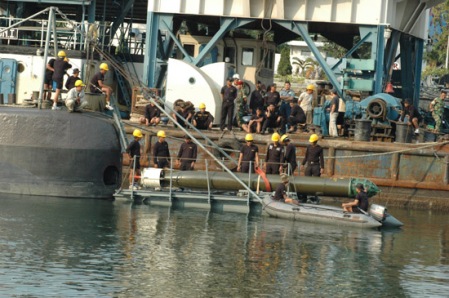
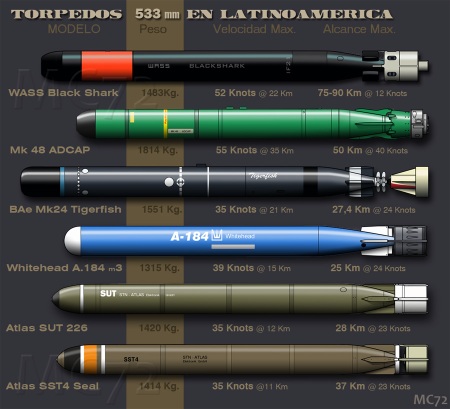




 Posted by indomil
Posted by indomil 
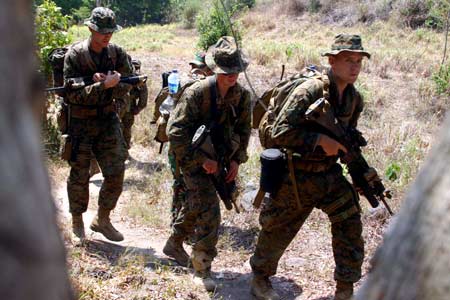

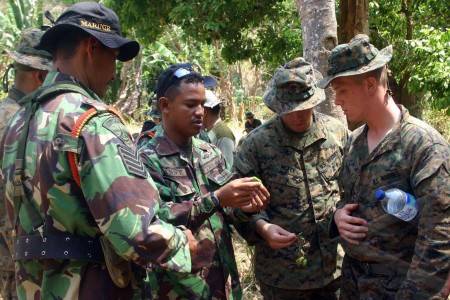
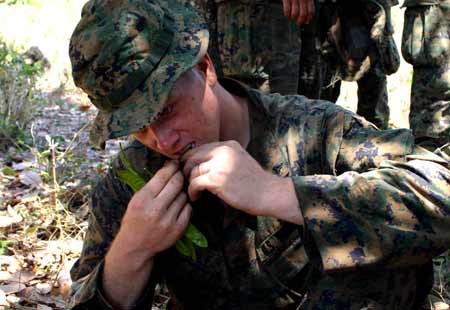
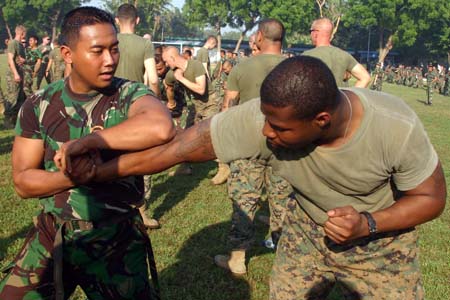
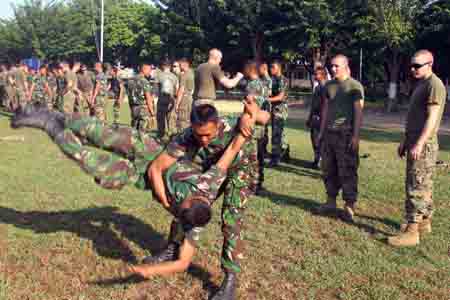
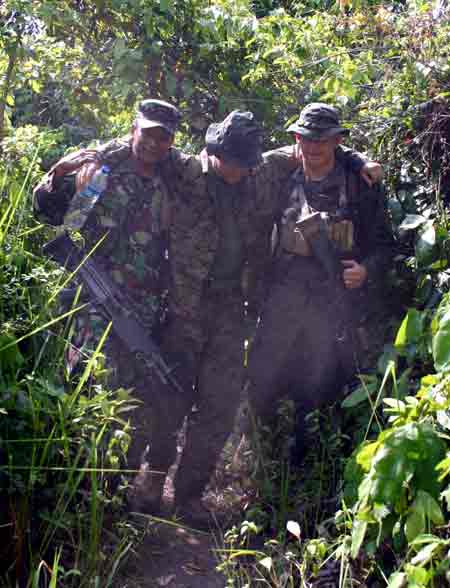
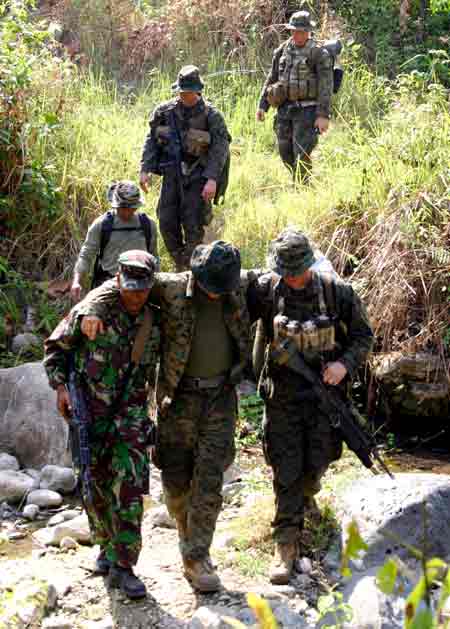
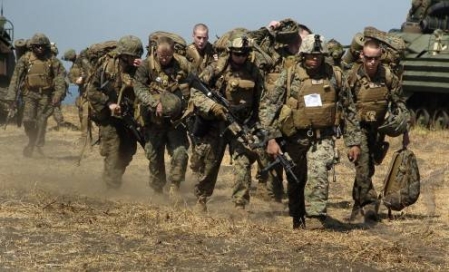 <
<